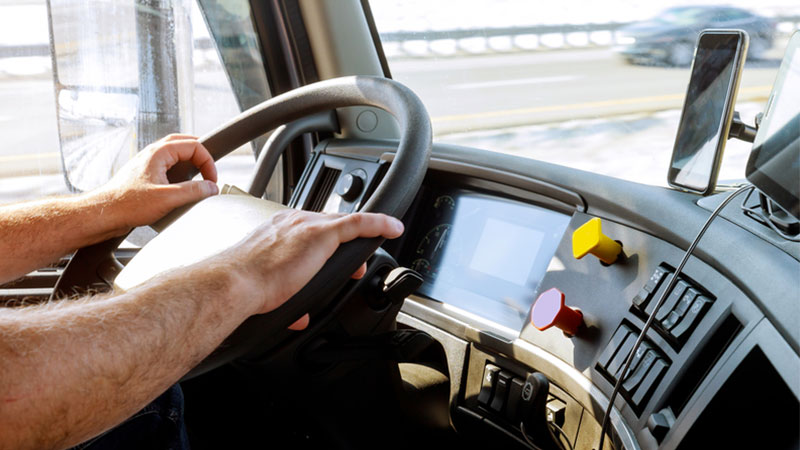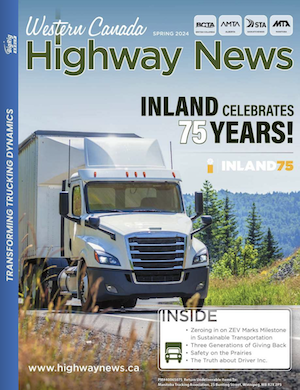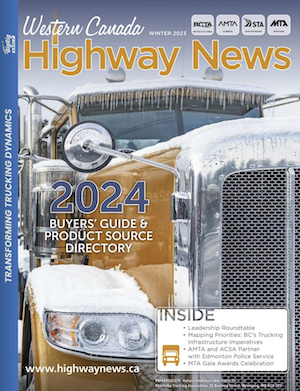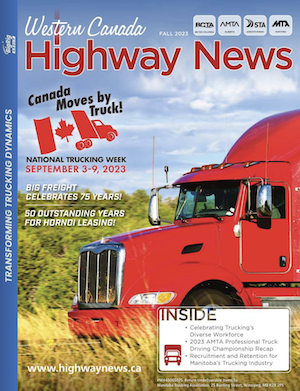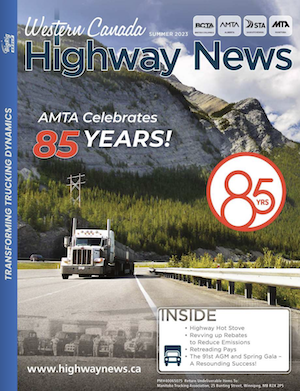Tat Wong, B.Sc., FCIP, CRM, Senior Vice President, Transportation, Marsh Canada
We have lived with the impacts of the COVID-19 pandemic on our world for more than a year now. We have also lived with increasing insurance rates in the trucking industry for a number of years. Many would like to know, “When are we going back to normal” or alternatively, at the very least, “When will things become stable?”
Trucking Insurance Segment Rates
Trucking insurance is within the commercial automobile segment for the purposes of tracking insurance segment results and trends. This includes trucking for hire, private trucks, and all sorts of light commercial vehicles operating in courier, last mile, and service capacities.
“The segment’s combined ratio deteriorated by 1.4 percentage points in 2019 to 109.4, driven by a nearly 2.0 percentage-point increase in the incurred loss & loss adjustment expense (LAE) ratio. Despite double-digit, year-over-year increases in earned premiums, the growth in incurred losses and LAE has outpaced earned premium growth.”1
As a segment, commercial automobile has not been profitable for insurance companies for over a decade. In fact, in 2019, the last year full results were tallied, commercial automobile insurers lost nine cents for every dollar of business they brought in.1
“Commercial auto outlook remains negative amid changing claims environment despite signs of improvement.”2
Furthermore, as of April 7, 2020, AM Best assigned a “negative” outlook to the US Commercial Automobile market segment citing “numerous challenges” in this sector.2 This explains the increasing insurance rates in past years and potentially in future years. Unfortunately, current conditions do not promise improvements in the commercial automobile segment results.
While overall traffic on the roads has lessened due to pandemic restrictions, our commercial automobiles hauling cargo are still running as they are essential services. Many claims professionals have noted a decrease in the number of commercial automobile claims; however, there continue to be large, severe losses.
Even if 2020 results turn out to be a better year for commercial automobile insurance, it will take a number of years of better results to impact the rate increase pressures. Unfortunately, the drivers behind rate increases have not changed or stabilized.
Drivers of other commercial automobile loss costs
- Increasing nuclear verdict activity in US courts.
- Increasing social inflation, which includes:
- Skyrocketing cost of medical treatments,
- Increased costs of repairing rolling stock due to advancing technologies, and
- Increasing severity accident frequencies.
- Increased distracted driving, which includes:
- Distracted driving of automobiles sharing the road with commercial vehicles,
- Some increase in distracted driving of commercial vehicles, and
- Severity in accidents increasing as a result of distracted driving impacts.
- Insurance company claims loss development, which is when the insurance company did not assess the ultimate cost of the claim accurately and this cost carries over to future years. These loss development factors contribute to a few percent of the rate increases applied (from prior year losses costing more then anticipate to close).
- Changing types of operations within commercial automobiles:
- During the pandemic, there has been a massive shift of resources to “last mile delivery”;
- Due to impact from the pandemic, the whole supply chain has been disrupted, in some areas permanently;
- Focus is now shifting to personal protective equipment, medicines/vaccines, hand sanitizers, consumer “shelter in place” products; or
- Consumer grocery deliverieshave accelerated beyond many grocers’ hopes.
Lastly, the pandemic affected many trucking companies’ operational revenue or sales forecasts. When these organizations disclosed their forecasts to insurance companies, results in 2020 were likely quite different, probably down. Insurance companies had priced and anticipated a certain amount of generated premium to offset their analysis of anticipated losses. There are likely no companies where COVID-19 has had an impact on their plans or forecasts.
Commercial Automobile Insurance: Availability, Limits, and Excess Limits
The commercial automobile insurance segment is not only challenging with continued increases in pricing; there continues to be challenges in availability in the primary automobile insurance coverage and excess limits. This is understandable, as over a decade of poor results in commercial auto means insurers are placing their bets elsewhere.
Many commercial automobile insurance buyers are accustomed to getting a great deal on premiums and having choices and plenty of excess limits capacity to meet their risk transfer or insurance goals. Today, primary automobile insurance is extremely limited in insurance companies, and the policy limits offered are often limited.
For excess insurance, finding options is even more restrictive, with price increases typically more than the increases noted in primary insurance costs. This is because in the past number of years, excess insurers have been incurring losses due to spiralling claims costs into their layers.
What does this mean for your operations?
Safety Culture
- Insurance companies are looking closer than ever for safety culture built into your organization.
- Insurance companies not only want to see a safety department, but also a workplace culture that walks and talks “safety.”
- This safety culture needs to start from the top, from ownership and management.
Operational Disciplines
- For trucks running U.S. miles, they should be monitoring, analyzing, and correcting your Safer SMS on a daily basis.
- For Canadian authorities, you should be monitoring, analyzing, correcting your records, on a daily basis.
- Driver on Road Performance – how is this monitored? By log book audit, telematics on your trucks, or by exception, events on dash cameras?
- How are safe behaviours incentivized? Do you have a driver safety rewards program? Is operational safety incentivized in dispatch?
- How are unsafe behaviours discouraged? Do you have policies in place that are followed consistently? Is this documented in the drivers’ files?
Benchmarking
- Know how your operation measures up against peers with your type of operations.
- Accidents per mile, safer SMS scores, provincial carrier profile scores, accident costs, and accident frequency and severity are all metrics that can and should be tracked and watched.
GAP Analysis
- Seek advice on key performance indicators for your type of operations and build a way to monitor the GAP analysis.
- Measure these key performance indicators against others in your type of operations; many peer groups within industry associations can be a fantastic resource in this area.
- Once you know where you stand now, plan around where you want to be in the future and develop actions that can take you there by closing the gap.
- Once you reach your goal, you can celebrate! But be sure to set a revised goal and repeat.
Minimizing your Potential for “Nuclear Verdicts”
All of the above disciplines truly are put to the test if your company is involved in a lawsuit where the plaintiff lawyers are trying to get the jury to return a “nuclear verdict.” Typically, your safety director and owner would be put on the stand to speak to the hundreds of documents requested by the plaintiff lawyers.
Hasn’t the Pandemic Halted “Nuclear Verdicts”?
“Zoom Jury Awards $411 Million Nuclear Verdict to Injured Motorcyclist.”3
The short answer is no. Courts and juries have the same access to video communications technology as most other organizations, which have made court proceedings possible throughout the pandemic. As a result, large judgement nuclear verdicts continued to make headlines. Since nuclear verdicts and their associated increased costs have appeared in the past decade, the conditions continue to drive these loss costs spiraling upwards with no end in sight.
Alternative Risk Transfer Mechanisms – Captives
Most, if not all, trucking companies would be interested in stabilizing their insurance costs. This has driven the current discussion on captives as potential solutions to the rising insurance costs in the regular market. What many do not realize is that it takes a very significant amount of time, resources, financial strength, and commitment at all levels of an organization to make a captive solution work.
When you are in a captive structure, you are now in the insurance business. You will retain or self-insure a significant part of the initial layers. When you are in the insurance business, the same forces that drive increasing rates in your traditional insurance product will directly impact you.
Insurance company partners who provide the primary insurance and excess insurance in support of captive arrangements require significant disclosure, review, and approval of your company’s financials. Even when you get to the point of getting your financials approved, the insurance company partners will require significant security, often in a Letter of Credit, cash, or a combination of both. You need to file detailed financial disclosures to support your captive and participate in Board meetings as required by the jurisdiction where it is established.
Finally, you will need to hire your own claims team to handle the losses in your initial retention and work with your captive insurer on losses that may exceed your retention.
Risk Management Partners are Essential
At a time when insurance markets are stressed, and the pandemic has put pressure on the economy, it is essential that you find partners with the most experience to help. Make sure you have an insurance broker who has experience specific to your operation. Resources in loss control or risk services can be helpful in ensuring your operation’s key performance indicators are all being monitored, along with immediate corrective action as required.
Lastly, if you are considering alternative risk transfer solutions, make sure you are working with an insurance broker who has clients already placed in these areas, so they have the experience to advise you through every step of the process. Keep in mind that alternative risk transfer solutions require a very strong commitment and a longer lead-time than your regular insurance renewal, often taking a year or more to complete.
Top tips for trucking risk managers
- Make sure you have a culture of safety that is supported throughout your organization.
- Make sure you use the available technology to constantly monitor safety performance in real time.
- Make sure you have policies and procedures in place to monitor your drivers’ behaviours; provide and document consistent and immediate feedback.
- Look at geographical areas that have nuclear verdicts and consider the cost of operating your business through that area. Do the costs justify the operations?
- Think about your drivers and ensure the policies and procedures you have in place support what they do.
- If you are not comfortable with any aspect of your business being an exhibit during a nuclear verdict trial, do something to fix it before it does become an exhibit.
- Immediately address any issues that may lead to a nuclear verdict.
Tat Wong, B.Sc., FCIP, CRM
Senior Vice President, Transportation
Marsh Canada Limited
120 Bremner Boulevard, Suite 800, Toronto, ON Canada M5J 0A8
Mobile: 416-605-4408
Email: tat.wong@marsh.com
References:
1 AM Best, Best’s Market Segment Report: U.S. Commercial Automobile Insurance Segment Records Decade-Worst Underwriting Loss in 2019, http://news.ambest.com/presscontent.aspx?altsrc=108&refnum=29559
2 AM Best, Market Segment Report: Market Segment Outlook: US Commercial Auto, http://www.ambest.com/ratings/RatingOutlook.asp
3 Risk and Insurance Magazine, Zoom Jury Awards $411 Million Nuclear Verdict to Injured Motorcyclist — One of the Largest Virtual Verdicts to Date, https://riskandinsurance.com/zoom-jury-awards-411-nuclear-verdict-to-injured-motorcyclist-one-of-the-largest-virtual-verdicts-to-date
Marsh is one of the Marsh & McLennan Companies, together with Guy Carpenter, Mercer, and Oliver Wyman.
This document and any recommendations, analysis, or advice provided by Marsh (collectively, the “Marsh Analysis”) are not intended to be taken as advice regarding any individual situation and should not be relied upon as such. This document contains proprietary, confidential information of Marsh and may not be shared with any third party, including other insurance producers, without Marsh’s prior written consent. Any statements concerning actuarial, tax, accounting, or legal matters are based solely on our experience as insurance brokers and risk consultants and are not to be relied upon as actuarial, accounting, tax, or legal advice, for which you should consult your own professional advisors. Any modelling, analytics, or projections are subject to inherent uncertainty, and the Marsh Analysis could be materially affected if any underlying assumptions, conditions, information, or factors are inaccurate or incomplete or should change. The information contained herein is based on sources we believe reliable, but we make no representation or warranty as to its accuracy. Except as may be set forth in an agreement between you and Marsh, Marsh shall have no obligation to update the Marsh Analysis and shall have no liability to you or any other party with regard to the Marsh Analysis or to any services provided by a third party to you or Marsh. Marsh makes no representation or warranty concerning the application of policy wordings or the financial condition or solvency of insurers or re-insurers. Marsh makes no assurances regarding the availability, cost, or terms of insurance coverage.
Copyright © 2021 Marsh Canada Limited and its licensors. All rights reserved. www.marsh.ca | www.marsh.com


 1-866-985-9791
1-866-985-9791